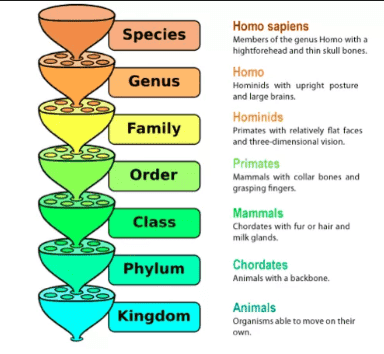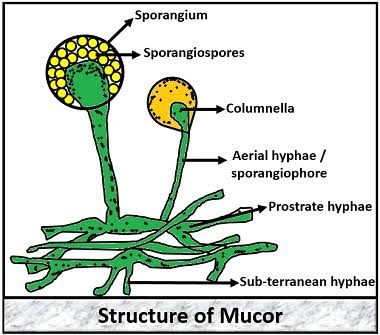Ecological Pyramid
An ecological pyramid could be a graphical illustration of the connection between completely different organisms in Associate in Nursing scheme. Each of the bars that compose the pyramid represents a distinct organic process level, and their order, that is predicated on United Nations agency chuck whom, represents the flow of energy. Energy moves up the pyramid, beginning with the first producers, or autotrophs, such as plants and algae at the very bottom, followed by the primary consumers, which feed on these plants, then secondary consumers, which feed on the primary consumers, and so on. The height of the bars ought to all be a similar, however the dimension of every bar is predicated on the amount of the facet being measured.
Types of Ecological Pyramids
Pyramid of numbers
This shows the amount of organisms in every organic process level with none thought for his or her size. This type of pyramid are often convenient, as enumeration is commonly a straightforward task and may be done over the years to watch the changes in an exceedingly specific scheme. However, some varieties of organisms square measure tough to count, particularly once it involves some juvenile forms. Unit: number of organisms.
Pyramid of biomass
This indicates the total mass of organisms at each trophic level. Usually, this kind of pyramid is largest at rock bottom and gets smaller growing, however exceptions do exist. The biomass of one trophic level is calculated by multiplying the number of individuals in the trophic level by the average mass of one individual in a particular area. This type of ecological pyramid solves some issues of the pyramid of numbers, because it shows a additional correct illustration of the quantity of energy contained in every organic process level, but it has its own limitations. For example, the time of year when the data are gathered is very important, since different species have different breeding seasons. Also, since it’s typically not possible to live the mass of each single organism, only a sample is taken, possibly leading to inaccuracies. Unit: g m-2 or Kg m-2.
Pyramid of productivity
The pyramid of productivity appearance at the entire quantity of energy gift at every organic process level, similarly because the loss of energy between organic process levels. Since this kind of illustration takes into consideration the very fact that the bulk of the energy gift at one organic process level won't be obtainable for consecutive one, it is additional correct than the opposite 2 pyramids. This idea is predicated on Lindeman’s common fraction Law, that states that solely regarding 100% of the energy in an exceedingly organic process level can go towards making biomass. In different words, solely regarding 100% of the energy can go in creating tissue, like stems, leaves, muscles, etc. in the next trophic level. The rest is employed in respiration, hunting, and other activities, or is lost to the surroundings as heat. What’s fascinating, however, is that toxins square measure passed up the pyramid terribly with efficiency, which implies that as we tend to go up the ecological pyramid, the quantity of harmful chemicals is more and more concentrated in the organisms’ bodies. This is what we call biomagnification.
The pyramid of productivity is that the most generally used form of ecological pyramid, and, not like the 2 different varieties, will ne'er be largest at the apex and smallest at rock bottom. It’s a crucial form of ecological pyramid as a result of it examines the flow of energy in Associate in Nursing scheme over time. Unit: J m-2 yr-1, where Joule is the unit for energy, which can be interchanged by other units of energy such as Kilojoule, Kilocalorie, and calorie.
While a productivity pyramid perpetually takes Associate in Nursing upright pyramid form, range pyramids square measure typically inverted, or don’t take the shape of an actual pyramid at all. To demonstrate, let’s take an oak tree, which can feed millions of oakworms. If we tend to take into account this scheme as our focus, then the producers’ level (one tree) can find yourself a lot of smaller than the first consumers’ level (millions of insects). This is less likely to occur in biomass pyramids, but is not impossible. The pyramids below show the various varieties of pyramids and therefore the shapes they'll have in numerous ecosystems.
Ecological Pyramid Examples
The diagram below is Associate in Nursing example of a productivity pyramid, otherwise known as Associate in Nursing energy pyramid. The sun has been included in this diagram, as it’s the main source of all energy, as well the decomposers, like bacteria and fungi, which can acquire nutrients and energy from all trophic levels by breaking down dead or decaying organisms. As shown, the nutrients then go back into the soil and are taken up by plants.
The loss of energy to the surroundings is also shown in this diagram, and the total energy transfer has been calculated. We start off with the total amount of energy that the primary producers contain, which is indicated by 100%. As we tend to go up one level, 90% of that energy is used in ways other than to create flesh. What the first customers find yourself with is simply 100% of the beginning energy, and, 10% of that 10% is lost in the transfer to the next level. That’s 1%, and so on. The predators at the apex, then, will only receive 0.01% of the starting energy! This unskillfulness within the system is that the reason why productivity pyramids square measure perpetually upright.
An ecological pyramid not solely shows U.S.A. the feeding patterns of organisms in numerous ecosystems, but can also give us an insight into how inefficient energy transfer is, and show the influence that a amendment in numbers at one organic process level will wear the organic process levels on top of and below it. Also, once information square measure collected over the years, the effects of the changes that take place in the environment on the organisms can be studied by comparing the data. If Associate in Nursing ecosystem’s conditions square measure found to be worsening over the years thanks to pollution or overhunting by humans, action are often taken to stop additional injury and probably reverse some of the present damage.
Related Biology Terms
- Trophic level – The position that an organism occupies within a food chain or an ecological pyramid, such as a producer, or a primary consumer. Many animals feed at several different trophic levels.
- Species – A group of organisms that exhibit common characteristics and can breed among themselves to produce fertile offspring.
- Ecosystem – A community of interdependent living organisms in association with the nonliving elements surrounding them. The way the living organisms and the physical environment interact is by exchange of nutrients and energy.
- Food web – A system of food chains that are interlocked with one another. Unlike in food chains, an organism in a food web can occupy several different trophic levels.














0 Comments
If you have any query let me know.